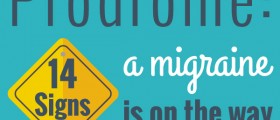Most of us experience headaches once in a while, but some people get chronic daily headaches - those that occur most days of the week, causing disabling symptoms that disrupt work and daily activities.
Chronic daily headaches usually occur at least 15 days a month, for at least three months. Some of them last for more than four hours at a time. Although most people think that these headaches are migraine headaches, there are different types of chronic headaches:
- Chronic migraines, which usually affect one side of the head, causing a throbbing or pulsating pain, that is moderate to severe in intensity. Accompanying symptoms include nausea, vomiting, and increased sensitivity to light, sound or smells. Pain usually worsens with physical activity.
- Tension headaches, which are characterized by mild to moderate pain that are felt on both sides of the head and feel like a tightening or pressing sensation. There is no pulsation, and they do not get worse with activity. These headaches are episodic in nature and may last for a few hours or stay constant. One may experience sensitivity to light or mild nausea.
- New daily persistent headaches become constant for days after it begins, and its characteristics are similar to tension headaches.
- Hemicrania continua, which causes one-sided headaches that continue daily, with no pain-free periods. Pain is moderate, but spikes of severe pain also occur. Sometimes, symptoms are similar to migraine, but in addition, one may also experience tearing or red eye, nasal congestion/runny nose, or drooping of an eyelid on the affected side.

It is not clear what causes primary headaches - those that are not related to other medical conditions such as brain tumors or infections. Some experts believe that people who develop chronic headaches may have an increased response to pain signals, and that the part of the brain that normally suppresses pain signals may not be working properly. In addition, various factors have been associated with frequent headaches, including sleep disturbances, anxiety, depression, obesity, snoring, chronic use of pain medications, excessive caffeine intake, and using postures that strain the muscles in the neck and head.
On the other hand, chronic headaches may also be related to some underlying medical problems (secondary headaches). Some of the possible causes include brain tumors, brain infection, dental pain, sinus infection, traumatic head injury, substance abuse, and chronic use of pain medications leading to rebound headaches.
When to See a Doctor
It is important to consult a doctor if:
- you are experiencing headaches at least twice a week
- you need to take medications almost daily, or if you need higher doses to relieve your pain
- your headache pattern changes
- your symptoms are not improving or are getting worse
- your headache is due to a head injury
- your headache is accompanied by unusual symptoms such as fever, neck stiffness, nausea and vomiting, seizures, visual disturbances, weakness of the body, numbness, trouble speaking, or confusion
- your symptoms are disrupting your daily activities
- MedicineNet. Headache. http://www.medicinenet.com/headache/article.htm
- Mayo Clinic. Chronic Daily Headaches. http://www.mayoclinic.org/diseases-conditions/chronic-daily-headaches/basics/definition/CON-20025386
- WebMD. Transformed Migraines. http://www.webmd.com/migraines-headaches/guide/transformed-migraines
- Photo courtesy of SteadyHealth
















